1942 Wheat Penny Coin Value: How Much Is It Worth?
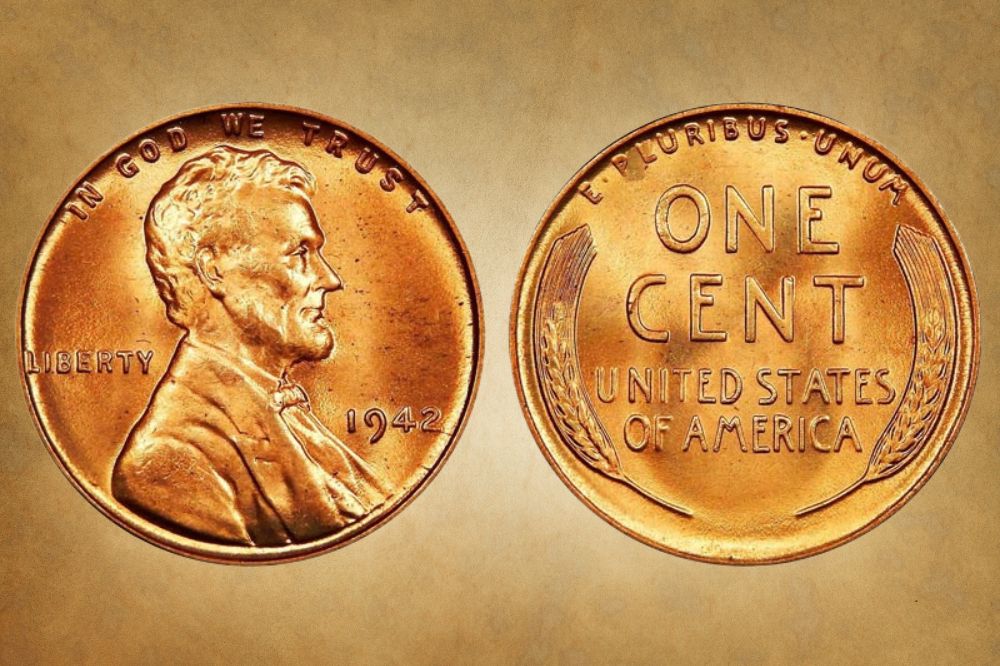
The Wheat Penny was minted from 1909 to 1958, and you may hear it referred to as the Lincoln Cent or the Lincoln Penny. It doesn’t have much intrinsic value today, and some folk want to phase it out. But older coins are still worth a lot to resellers, and 1942 was a good year. Let’s look at the key facts and confirm the true 1942 Wheat Penny Value for collectors.
1942 Wheat Penny Value Chart |
|||||
| Mint Mark | Good (G 4) | Fine (F 12) | Extremely Fine (EF 40) | Uncirculated (MS 60) | Mint State (MS 65) |
| 1942 ‘P’ No Mint Mark Wheat Penny Value | $0.17 | $0.22 | $0.56 | $1.13 | $3.30 |
| 1942 S Wheat Penny Value | $0.22 | $0.33 | $1.42 | $7.88 | $13.00 |
| 1942 D Wheat Penny Value | $0.17 | $0.22 | $0.56 | $1.13 | $3.13 |
1942 Wheat Penny Value Guide
Mint marks are largely administrative. Their purpose is to let mint officials know where each coin originated. But they can also assign value to the coin, especially if a limited number were minted in a given year or location. Let’s look at mintage stats for 1942 wheat pennies.
1942 No Mint Mark Wheat Penny Value
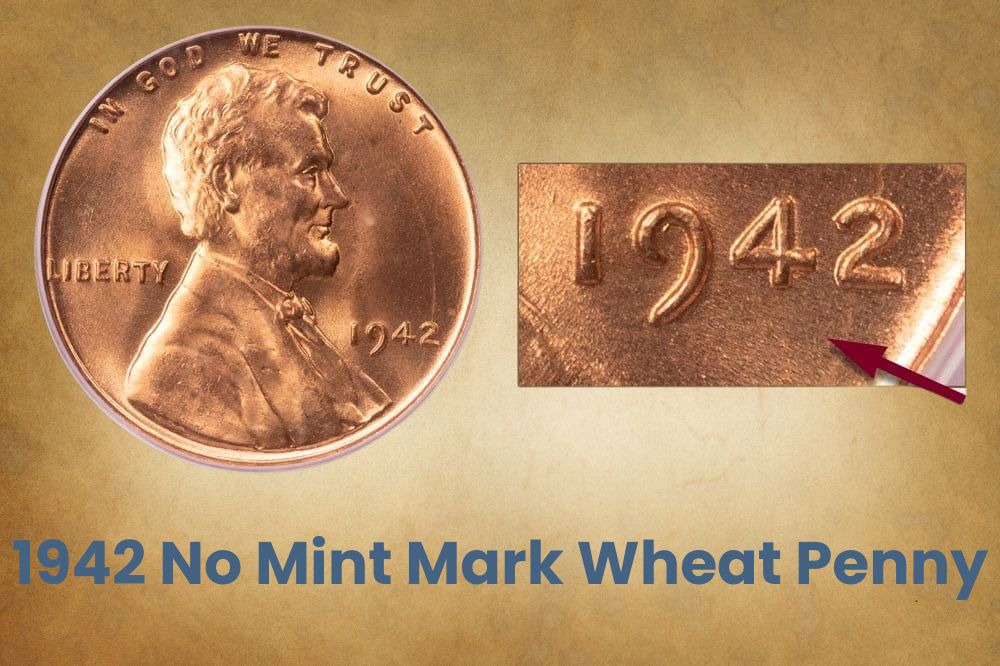
Coins from Philadelphia don’t have mint marks because it was the only existing mint in 1792. The next branch didn’t open until 1863. In 1942, Philadelphia produced 657,796,000 wheat pennies, the largest run that year. The high mintage means the coins aren’t especially pricy, but they made a few proofs and if you can find one graded PR 65, you could get $145 for it.
1942 S Wheat Penny Value
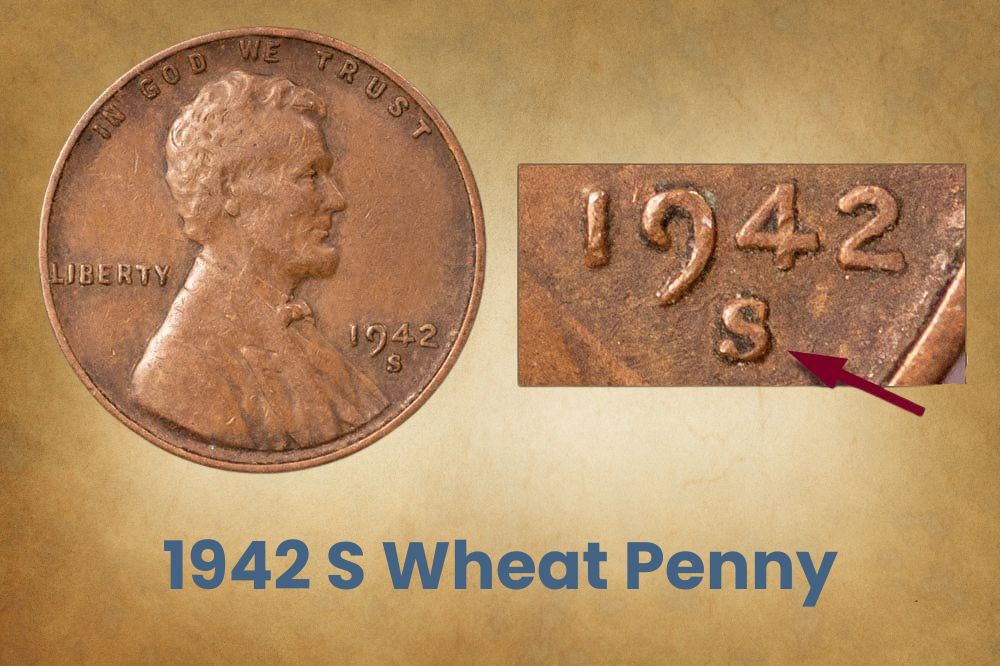
The San Francisco Mint coined 85,590,000 wheat pennies in 1942. It was the lowest volume from all three mints so you can fetch slightly better prices than 1942-Ds and 1942 ‘P’s. In a high grade of MS 67+ RD, a 1942 San Francisco wheat penny can sell for around $2,300.
1942 D Wheat Penny Value
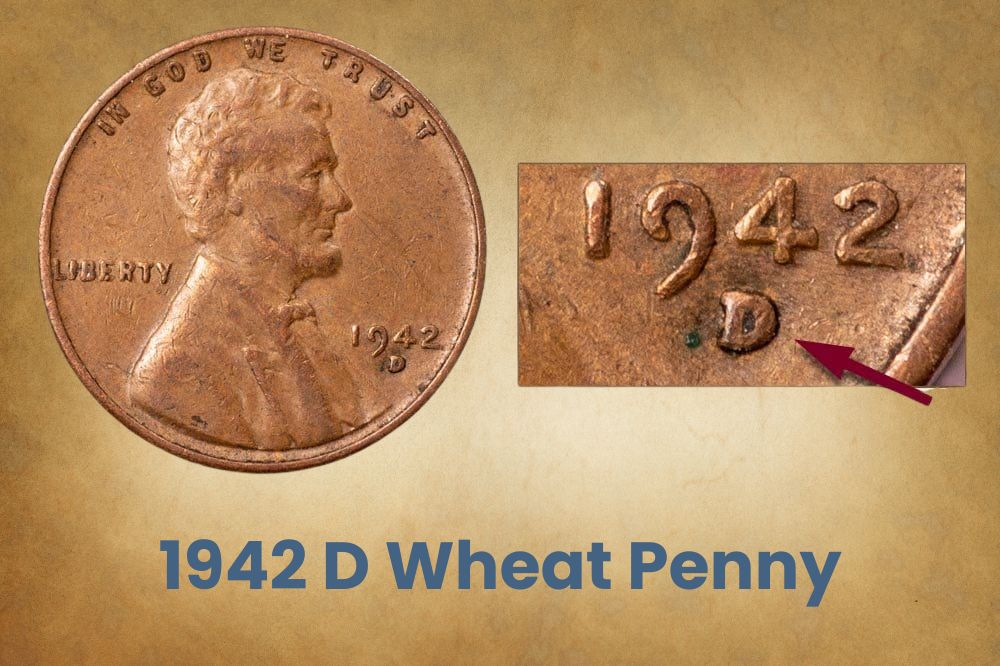
The Denver Mint produced 206,698,000 wheat pennies in 1942. This is the mid-point in volume, so 1942-Ds aren’t necessarily premium. If you find a 1942 D wheat penny in pristine condition, you could get a couple thousand dollars for it. A 1942 D in MS 67+ RD resold for more than $2,000. But 1942 D wheat pennies in average condition are only worth face value.
1942 Proof Wheat Penny Value
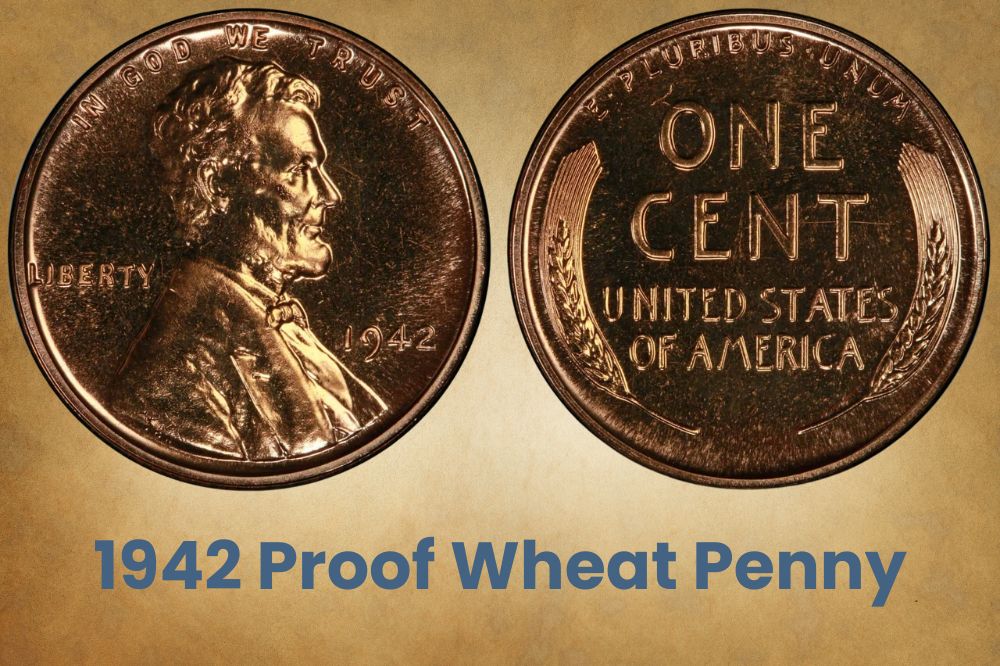
Most of the time, San Francisco coins are proofs, but in 1942, the proofs were made in Philadelphia instead, and a PF 67 RD CAM went for $17,000. CAM means cameo, and it’s an effect that pops up on the first 50 to 100 coins minted from any proof die. CAM coins have a mirrored field and a frosted device. Planchets are burnished and dies are specially treated.
Related Posts: 16 Most Valuable Wheat Penny Errors
1942 Wheat Penny Errors
For the average person, a coin that looks damaged or has mistakes is worthless. But in the world of numismatics (studying, collecting, and trading coins), a flaw can launch coin prices into the thousands! And even in lower grades like G 4 or VF 30, a penny with an error can sell for over $100. So let’s explore the value and validity of some 1942 wheat penny errors.
1942 Wheat Penny DDO Error
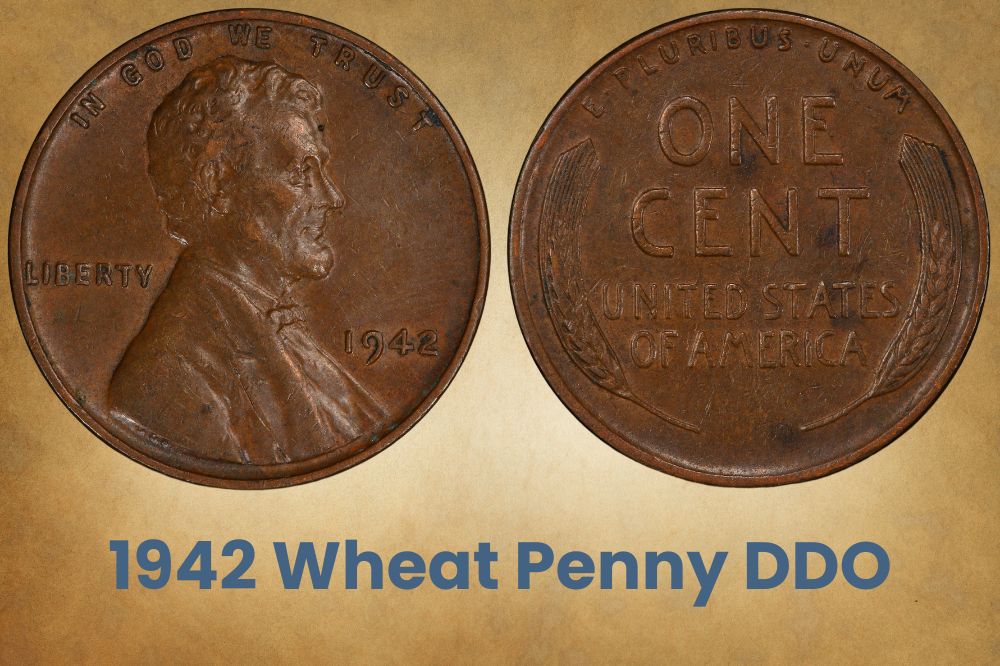
DDOs (double die errors) occur if the die moves during the hubbing process, which leads to some features on the coin overlapping into a shadowing or doubling effect. On one 1942 wheat penny, the doubling is on Lincoln’s eyelid, and in AU 53, the coin fetched $150. But a different DDO sample that’s visible on Liberty can earn $250 in AU 53 and $500 in MS 63.
1942 Wheat Penny DDO + RPM Error
RPM means re-punched mint mark. This could be the same mint mark (e.g. D for Denver) stamped on top of itself, sometimes defined as D/D or S/S. Or it could be a mixed mint mark error with an S over a D, described as S/D. This error happens with recycled coins that are moved between mints. A wheat penny that has both DDO and RPM sells for $500 in MS 65.
1942 Wheat Penny S/S/S RPM Error
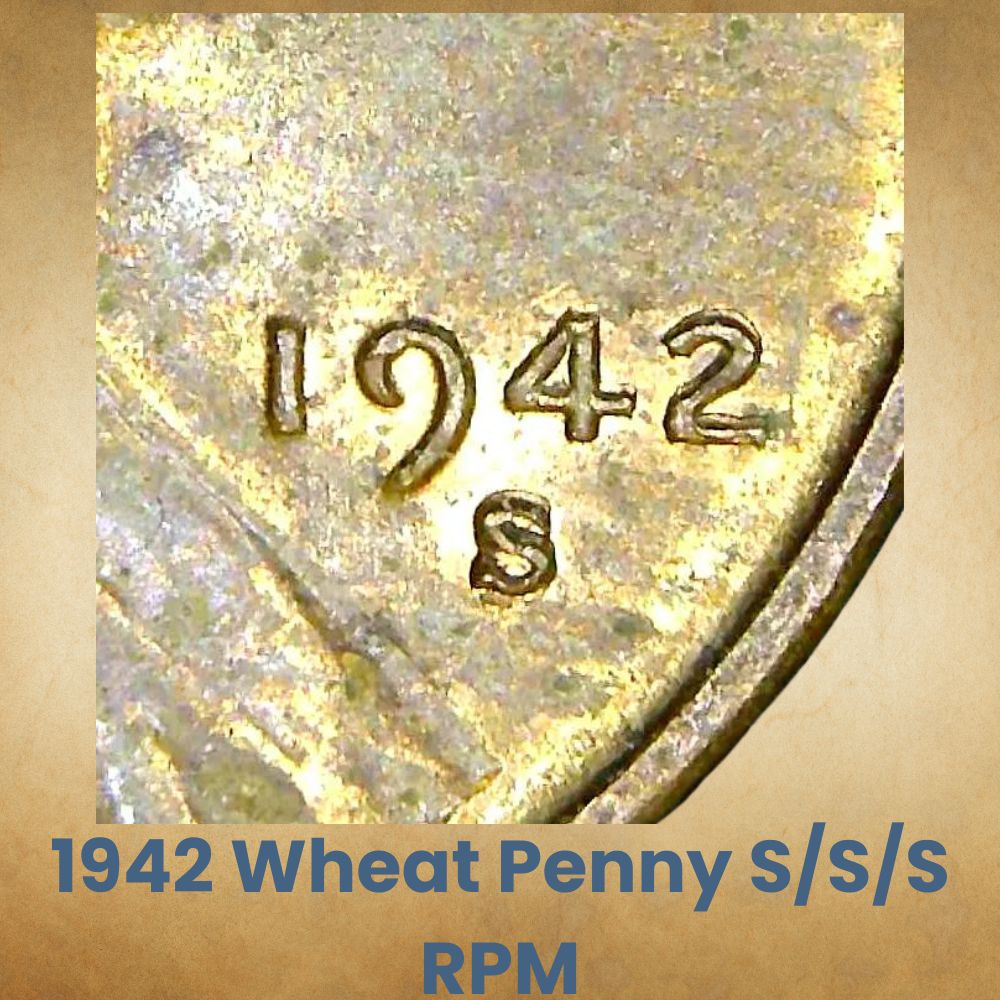
If your coin only has a re-punched mint mark error, you can get $200 to $300 in high grades. But for coins that have RPMs and DDOs, the price goes up. This 1942 wheat penny has a DDO on the word God (from In God We Trust) and the 9 in 1942. It also has the San Francisco mint mark re-punched three times. In MS 66+ RD, it resold for almost $1,000.
1942 Wheat Penny D/D Error
You’ll sometimes need a jeweler’s loupe or a coin microscope to confirm re-punched mint marks because the underlying stamp is always clear. A D/D coin graded MS 62 BN goes for $150. In a higher grade of MS 67 RD, the coin price shoots up to $700. Incidentally, the BN stands for Brown and is the third-best coin grade after RD (red) and RBN (reddish-brown).
1942 Wheat Penny Struck on a Thick Planchet
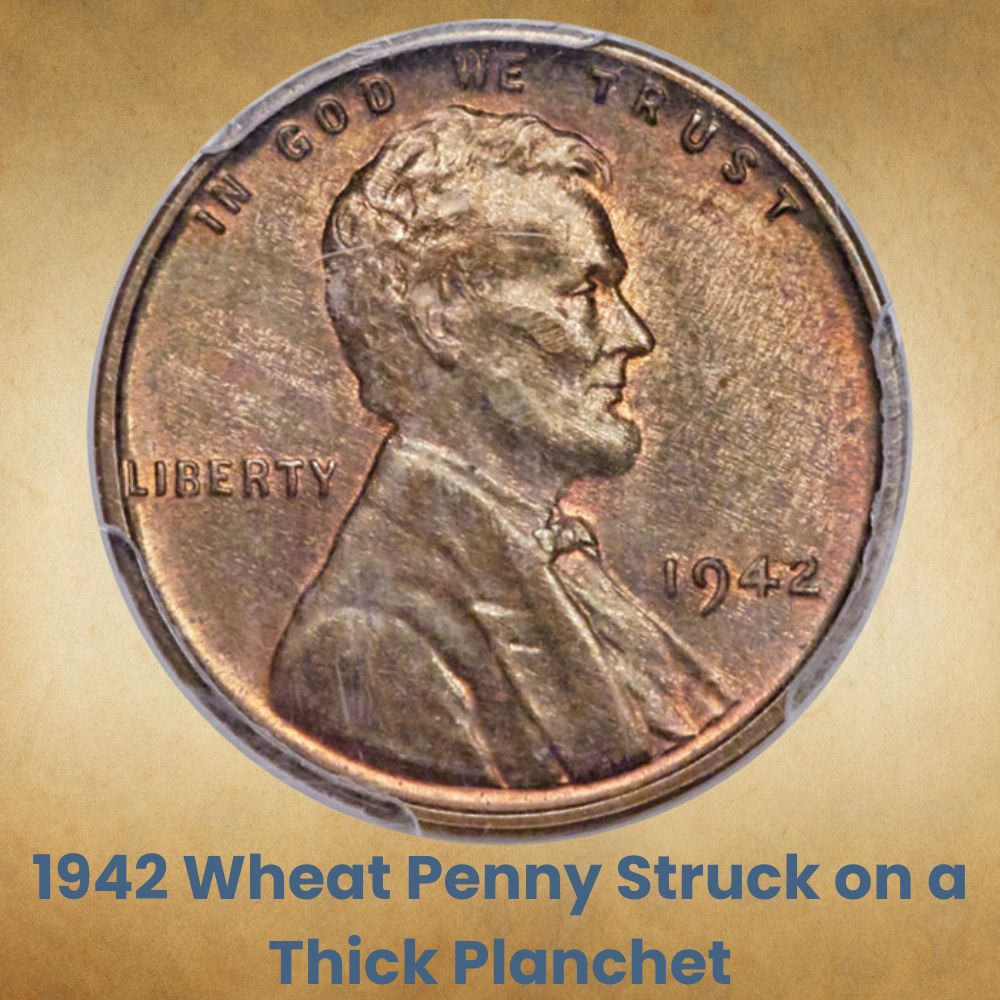
We assume coin errors can be visually detected. But sometimes, the coin appears flawless and you won’t spot the error unless you weigh it. This coin was minted on a fatter planchet, so it weighs 4.11g instead of 3.11g. (Also, it probably wouldn’t fit in a penny coin slot!) In MS 62 BN, the extra thicc-ness added some value for the coin, and it sold for more than $1,600.
1942 Wheat Penny Obverse Struck Thru Error
A strikethrough (or strike-thru, or struck-thru) error happens when a foreign object gets between the die and the coin during the minting process. Sometimes, it’s easily identifiable, like a staple or a piece of tape. In this case, the strike-thru was an egg-shaped fragment that covers Lincoln’s eye. In AU 55 BN, the error raised this 1942 wheat penny’s value to $485.
1942 Wheat Penny Mirror Brockage Obverse 40% Off-Centre
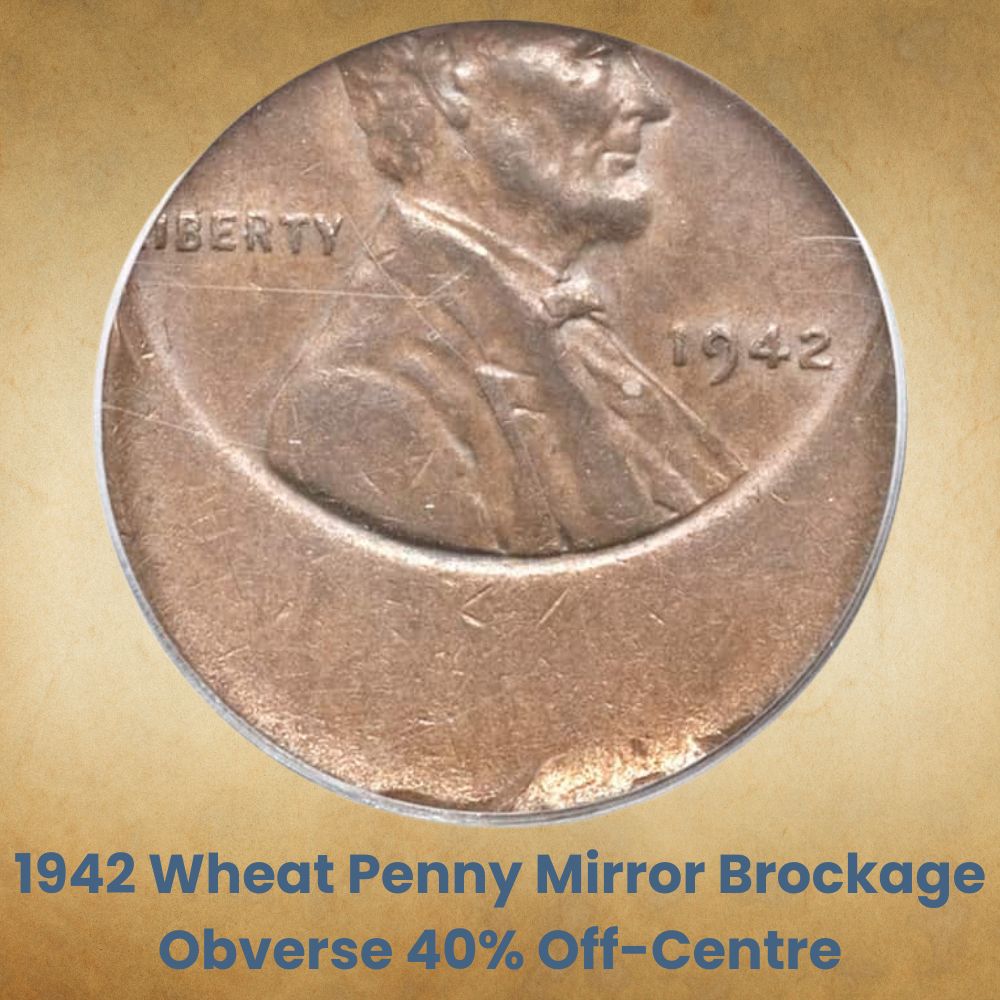
When coins are being minted, different dies are used for the obverse and reverse, so errors typically appear on the side with the flawed die. But sometimes, an identical error cuts both sides of the coin. This is called a brockage error. A coin with a 40% off-center brockage error shows the top two-thirds of Lincoln’s head. In MS 62 BN, the coin sold for more than $2,500.
1942 Wheat Penny Struck on a Brass Planchet
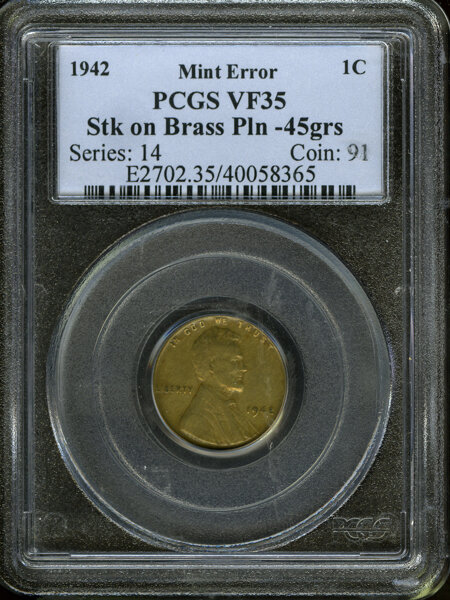
A planchet is a blank metal disc that gets stamped with a die to make a coin. For the 1942 wheat penny, planchets were meant to be 95% copper and 5% zinc, an alloy that’s sometimes called French bronze. But this coin was struck on a brass planchet so the toning is different. Even in the low EF 45 grade, the coin earned $125. That’s more than some mint-state coins!
1942 Wheat Penny Struck on a 10c Planchet
To form a planchet, mint workers use massive sheets of the right weight and composition. So if you punch your planchets using the wrong sheet, you may end up stamping your coin on the wrong denomination. A penny (1c) struck on a dime (10c) will have a silver-looking finish and seem truncated. In EF 40, it sells for $1,000, but in AU 48, the coin sold for $14,000!!
1942 Wheat Penny Struck on Ecuador 10 Centavo Planchet
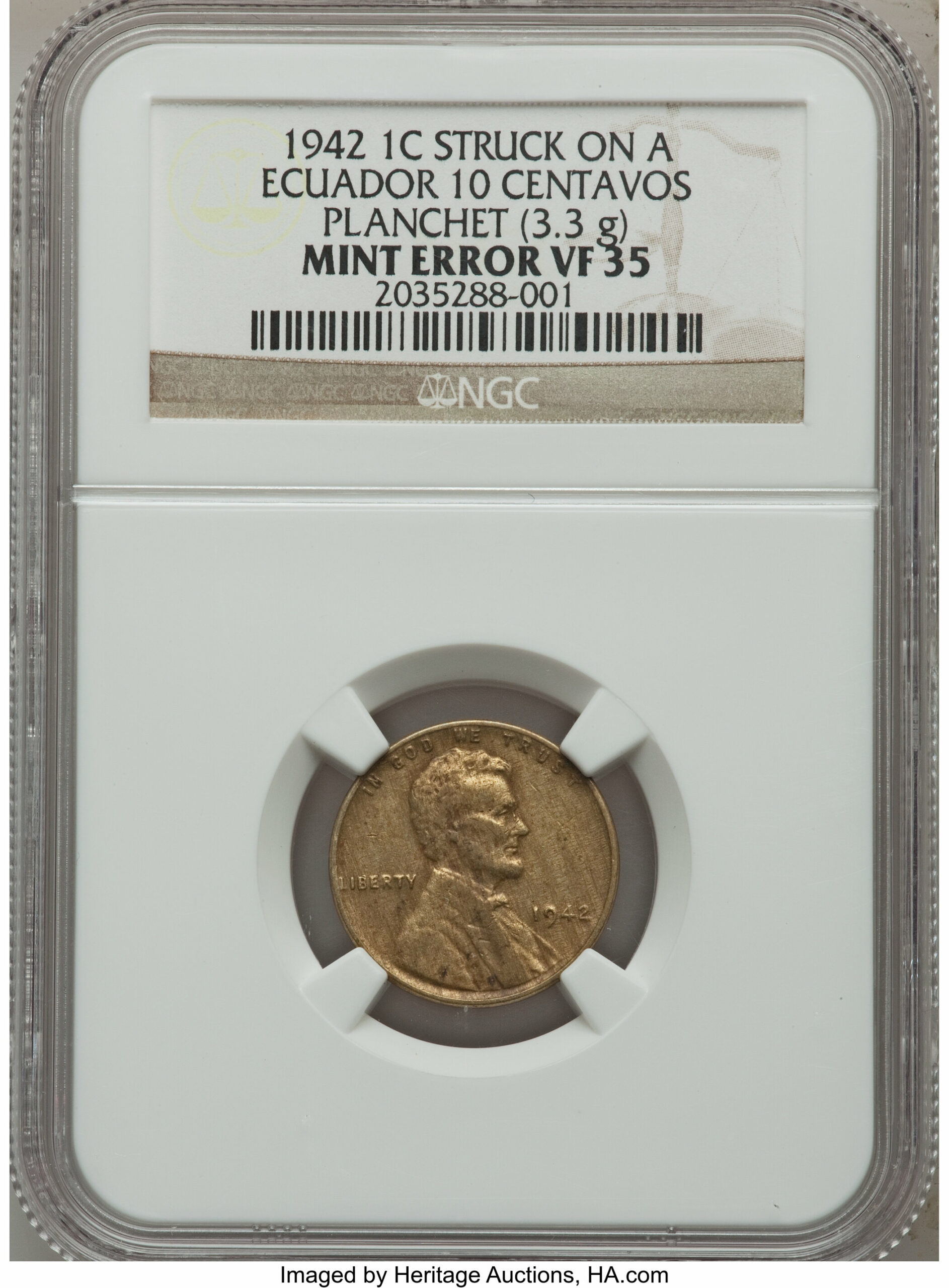
It makes sense that denomination sheets can get mixed up, but how do you stamp a coin on a foreign planchet? Nobody knows for sure, but striking a 1942 penny on an Ecuadorian coin is one way to hike its value. You can spot the coin by its weight – 3.3g instead of 3.11g. The coin is barely a VF 35, but the wrong planchet makes this 1-cent coin worth a whopping $1,800.
1942 Wheat Penny Struck on Wrong Planchet
If you only take one thing from this article, it should be this – get a digital scale! Why? Well, this is the third coin we’ve identified by weight, and it’s 3.6g instead of 3.11g. Its planchet has the wrong metal composition, namely, 84% copper, 11% zinc, and 5% tin (SN). The coin was badly cleaned, which generally lowers coin value, so don’t! In VF, the penny sold for $550.
Related Posts: 19 Most Valuable Lincoln Memorial Penny Worth Money
History of the 1942 Wheat Penny
In America, we use dollars and cents. But because we were once a British colony, we still refer to our 1-cent coins as pennies – that’s what they’re called across the pond. Our penny is known as the Lincoln Penny (or Lincoln Cent) because it features Abraham Lincoln, the 16th US President. He was first placed on the coin to celebrate the 100th anniversary of his birth.
Before the Lincoln Penny, America didn’t put presidents on coins because our first leader, George Washington, felt that was ‘a monarchy thing’ and the republic was trying to get away from the British way of doing things. But Abe was a pretty popular president and the public loved the coin. It was designed by Victor D. Brenner. As usual, he put his initials on the coin.
Well first, he spelled out his full name on the obverse, which was unconventional – most people used initials. When that got shot down, he switched to initials, which he placed on the back of the coin. Some still felt his initials were too big and advertorial. They were removed within the first week and didn’t reappear until 1918, on the front, and in a much smaller font.
Regarding the design itself, Lincoln was the first recognizable human on American currency. Previous coins and notes had symbolic depictions of Lady Liberty. But Theodore Roosevelt, the 26th President of the United States, wanted US currency to be prettier and more artistic, so from 1904, he wanted professional sculptors and artists to be hired as official coin designers.
Brenner had made a Lincoln plaque in 1907, which Roosevelt liked. And Roosevelt himself posed for Brenner in 1908. That’s probably how Brenner got the coin job. His first sketches were based on French coins, which the mint rejected. He then offered a design with two ears of durum wheat which got approved. Less than 500,000 1909-S coins have VDB on them.
Related Posts: 19 Most Valuable Wheat Penny Worth Money
how to identify 1942 Wheat Penny
The two stalks on the wheat penny are of the durum variety, which is sometimes called pasta wheat, or even macaroni wheat. But now let’s look at both sides of the coin to see its features.
The Obverse of the 1942 Wheat Penny
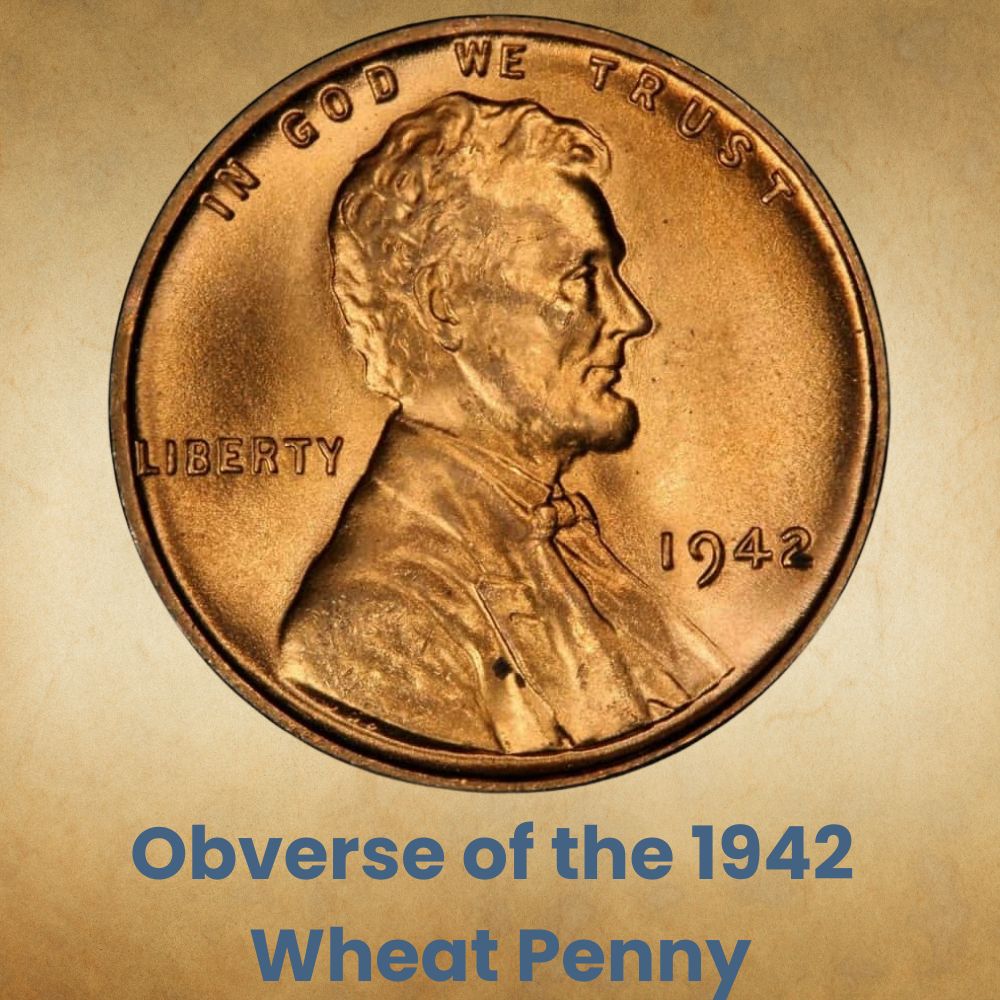
The obverse (heads side) of the wheat penny has a portrait of Abraham Lincoln. The portrait was based on a 1907 desk plaque for Gorham Manufacturing Company. He faces right, and on this coin, the word order is different. In God We Trust runs along the upper rim of the coin. Behind Lincoln’s shoulder, the word Liberty is stamped. The mint year is on the right.
The mint mark appears in front of Lincoln’s chest, below the year of mintage on the right. At the base of the portrait, a tiny VDB marks Victor Brenner as the coin’s designer. The initials don’t appear on all wheat pennies because there was a lot of controversy around it, which we hinted at earlier. But by 1942, an acceptably small VDB stamp was positioned on the obverse.
The Reverse of the 1942 Wheat Penny
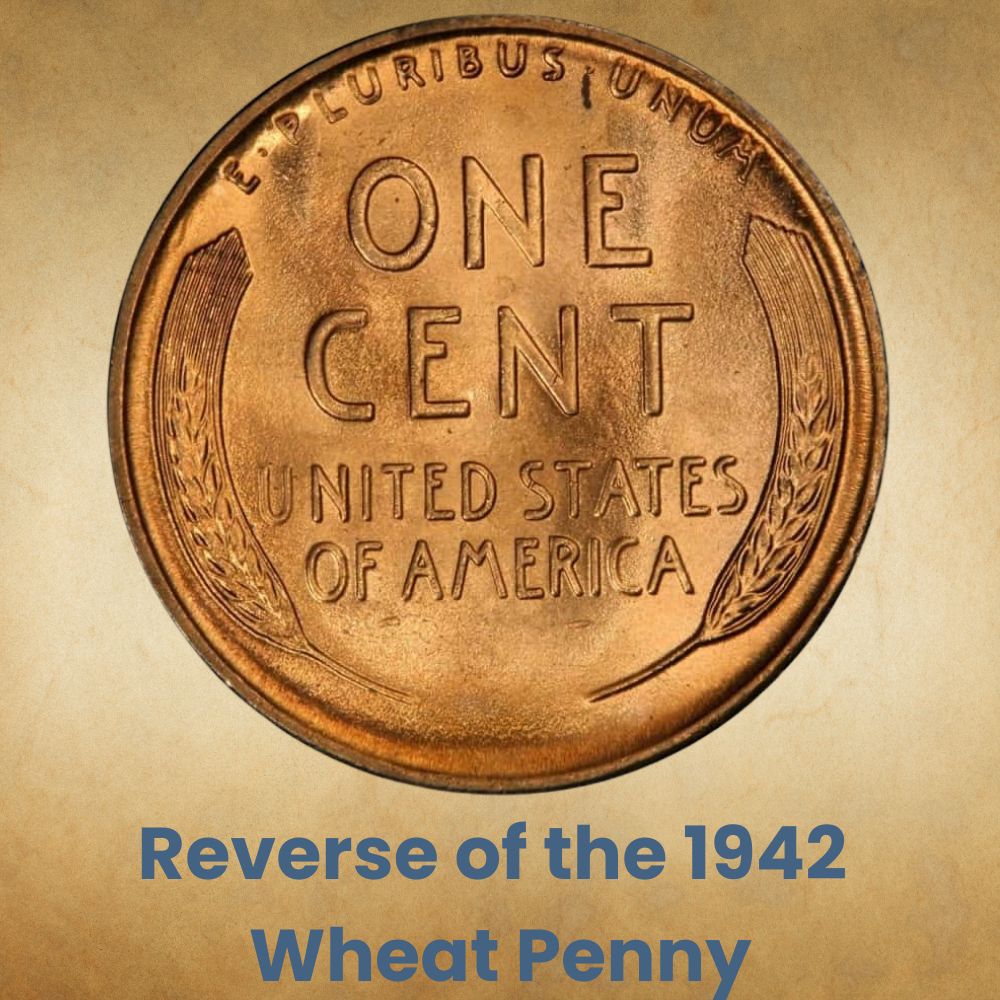
The reverse (tails side) of the 1942 wheat penny was also designed by Victor Brenner. It depicts a pair of wheat sheaves running along the sides of the coin and framing the mottos. Between the two branches are the denomination (One Cent) and the legend United States of America. E Pluribus Unum runs along the coin’s upper collar with dots between the words.
This wheat stalk reverse was used until 1958, then in 1959, Assistant Mint Engraver Frank Gasparro sculpted the Lincoln Memorial for the back of the penny. This reverse was changed to the four commemorative reverse designs of 2009 before the current shield reverse was adopted in 2010. The reverse of the 1942 wheat penny doesn’t have any years or mint marks.
Other Features of the 1942 Wheat Penny
The wheat penny was 95% copper and 5% zinc until 1942. After that, the metal mix changed to zinc-plated steel in 1943. In 1944, it resumed its 95:5 ratio until 1982, when it changed again to 97.5% zinc coated with 2.5% copper. The steel coins of 1943 were 2.7g, but the 1942 wheat penny was 3.11g. They’re 19.05mm in diameter (0.75”) with a smooth unreeded edge.
FAQs About the 1942 Wheat Penny
How Much is a 1942 No Mint Mark Wheat Penny Worth?
As we said before, Philadelphia had the highest wheat penny mintage that year. And since these ‘P’ pennies are so populous, most are only worth their face value. In average condition, you might get 35 cents for this coin, but even in mint state, you get about $3 without errors. But a 1942 wheat penny proof coin without a mint mark (PF 67 RD CAM) sold for $17,000!
Why is the 1942 Wheat Penny so Valuable?
1942 is a landmark year because copper and nickel were in high demand for the war effort. So this is the last year before War Pennies. War pennies were steel coated with zinc, and were only used for a year. It could be why 1942 wheat pennies attracted interest. Nobody was sure how long the war (and its steel pennies) would last, so the 1942 cents seemed valuable.

I have a 1942 wheat penny fine condition and no mint mark.. Looking for value and sale?.
I have a 1942 nomet mark penny with a couple of errors on it. The e on the back the middle bar is that angled towards the top corner and on the front the t in liberty Looks like upside down l I am not a coin collector just found this going through. Some change helps funny. Hoping you could help me with this.
I have a 1942 S Penny that weighs 2.7 Grams. Any thoughts. Does not appear to be extremely worn.
I have one similar but when I did a specific gravity test comparison to a 1941copper penny. I found it was 50% copper and 50% Zinc. I am a member of NGC. I am sending it along with other coins for certification. Their # 855-472-3310 you can call them for advice
I have a 1942 no mint mark the letter D in (In god we trust) is missing can anyone help me with the coin. Could this be an error ?
1942 wheat penny with no D in god we trust.
I have a couple of the steel pennies. And a few 1942 with different men marks. Any thoughts about there value.